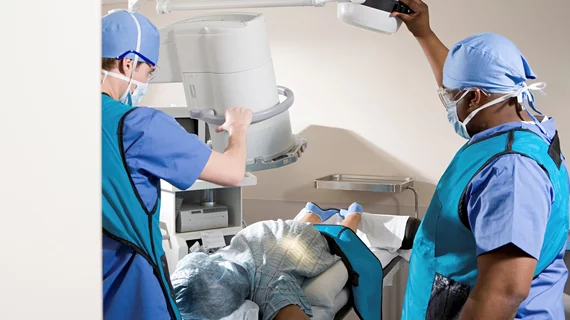Prominent European medical groups released a multi-society statement Thursday, recommending institutions end the practice of patient contact shielding during x-ray, CT and interventional radiology exams.
A working group made up of representatives from various U.K. radiologic societies weighed the evidence for and against patient shielding before making their declaration, published March 5. Those authoritative bodies include members of the British Institute of Radiology, Institute of Physics and Engineering in Medicine, Public Health England, the Royal College of Radiologists, Society and College of Radiographers, and Society for Radiological Protection.
The 87-page guidance challenges the “historical perspective” that using contact shielding provides a benefit to patients; instead, the new group determined that shielding can adversely interfere with imaging and result in repeat testing and increased radiation exposure.
“Overall, the findings suggest that contact shielding provides minimal or no benefit and professionals should concentrate on other areas of radiation protection which are more effective in optimizing the patient radiation exposure,” authors of the consensus document wrote Thursday.
They pointed out that, thanks to technical advances, imaging equipment can now be adjusted to minimize the radiation required for an exam. In addition to focusing on these technological progressions, the authors encouraged radiology to focus on education, training and quality radiographic technique to minimize radiation.
Importantly, staff working in x-ray, CT and interventional radiology rooms are still recommended to wear aprons and shields because these individuals spend their entire day in exam areas and have more exposure to radiation.
Reversing this more than 70-year-old trend in shielding will take time, but doing so will result in more consistent examinations and higher-quality patient care, the working party said.
“This guidance offers clarity to both patients and professionals and hopefully will lead to a consistent approach in the future as this provides scientific evidence for change,” said Peter Hiles, chair of the BJR working party said in a statement. “However, it will require a major cultural change in outlook regarding radiation safety and practice in this area.”
Read the entire guidance document here.

